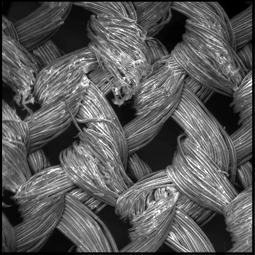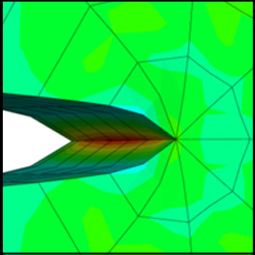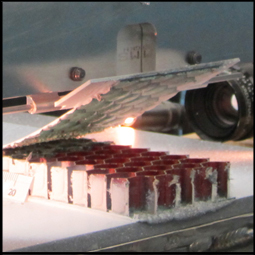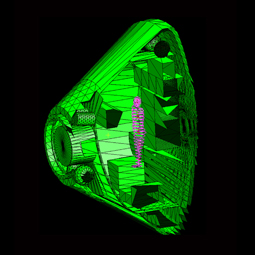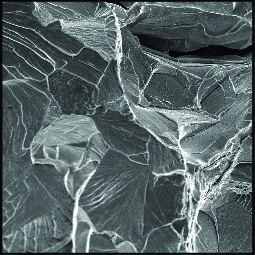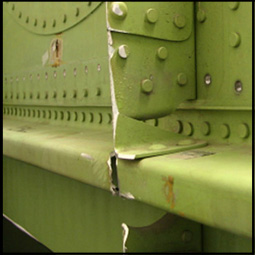Failure and Incident Investigations
During the past few decades, NASA Langley Research Center (LaRC) has supported several large-scale failure and incident investigations and numerous requests for engineering consultations. Although various extenuating circumstances contributed to each of these incidents, in all cases, the problem was an accumulation and/or propagation of damage that reduced the load carrying capability of the structure to a level below that which was needed to sustain structural loads.
Because of the unique subject matter expertise of the Durability, Damage Tolerance and Reliability Branch (DDTRB), research staff have been called on numerous times to support these failure and incident investigations that are of importance to the Center, the Agency and the Nation. To facilitate timely response, existing methodologies for interrogation of the failures are applied whenever possible. However, specialized methods that advance the existing state-of-the-art are developed when necessary.
Ten examples of failure and incident investigations in which DDTRB has been involved in recent years are:
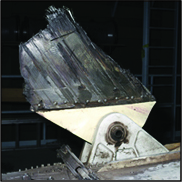 |
- American Airlines Airbus A300-600R Failure Investigation – developed and applied progressive failure analysis methods for determining the sequence of events that led to the loss of the tail section and performed fractographic examinations to understand failure mode and failure sequence
|
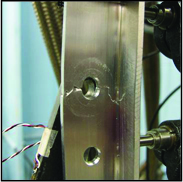 |
- Space Shuttle External Tank Cracking – characterized and determined the root cause of mixed-mode cracking in aluminum-lithium space shuttle external tank material
|
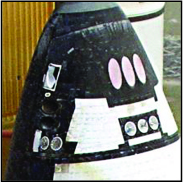 |
- Space Shuttle Reaction Control System (RCS) Thruster Cracking – characterized and determined the cause of cracking damage in shuttle RCS thrusters; inspected flight hardware for cracks
|
 |
- ISS Solar Mast Buckling – characterized buckling behavior of International Space Station solar panel array mast structure due to temperature differential caused by shadowing of the ISS on the solar mast
|
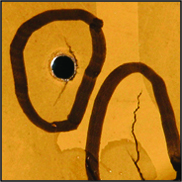 |
- Failure Analysis of US Army Rotorcraft – on multiple occasions have performed failure analyses to determine root-cause of failure in Army and Coast Guard rotorcraft components
|
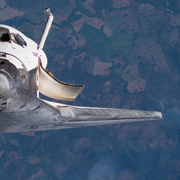 |
- Characterization of RCC Fracture – performed testing to obtain fracture mechanics parameters of space shuttle RCC material
|
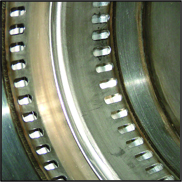 |
- Space Shuttle Flow Control Valve Cracking – performed Probability of Detection (POD) study to evaluate the reliability of nondestructive inspection (NDI) methods to locate small fatigue cracks in space shuttle gaseous hydrogen poppet valves
|
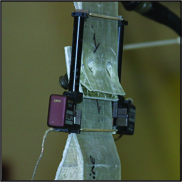 |
- MLAS Composite Repair – testing done to evaluate the effectiveness of composite material repair for the Max Launch Abort System (MLAS)
|
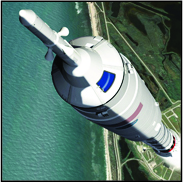 |
- Ares 1-X Support – multiple testing and/or analytical tasks were conducted to show flight rationale of Ares I-X rocket structure
|
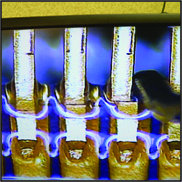 |
- MEDLI Circuit Board Pin Failure – determined root-cause of failure for electrical components in Mars Laboratory Entry Descent and Landing Instrumentation (MEDLI) flight hardware; failure occurred during shaker testing to simulate launch conditions.
|
DDTRB has provided critical support to ensure safety of vital equipment (and human operators) for NASA and other government agencies. Often, critical testing and/or analysis have been delivered rapidly due to launch schedules, entire fleets of grounded vehicles, etc., while delivering the highest-possible quality of results.
If you would like more information on these topics, go to the link below, which is NASA’s technical report server: http://data.nasa.gov/nasa-technical-reports-server/











